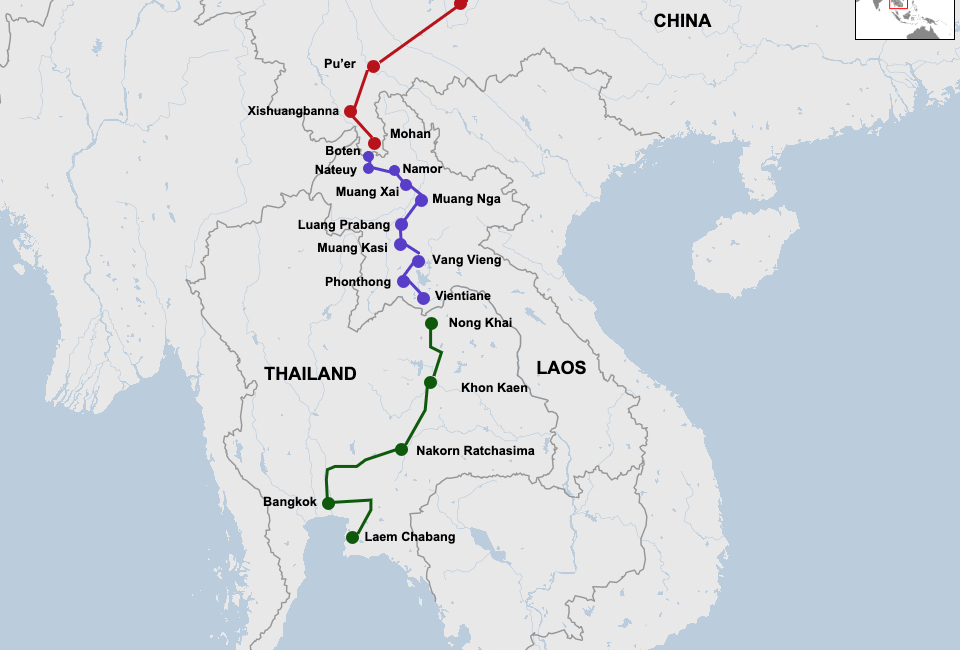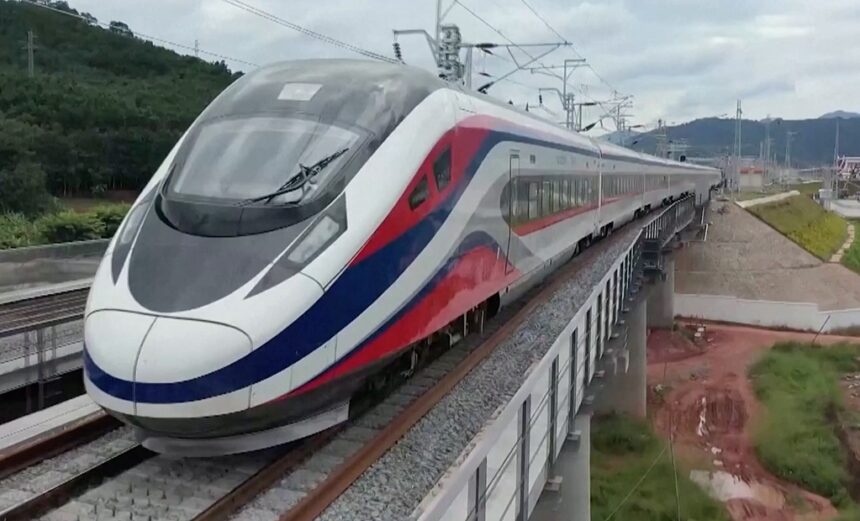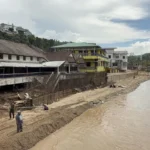The government of Thailand has approved the second phase of the China-Thailand High-Speed Railway (HSR), a key infrastructure project under the Belt and Road Initiative (BRI). This railway will eventually link Thailand to China through the China-Laos Railway, as reported by Xinhua News Agency.
Phase Two of the HSR, which will connect Nakhon Ratchasima to Nong Khai, is expected to be completed by 2030. Chinese and Thai experts predict that the railway, once operational, will create opportunities for Thailand to boost exports, attract foreign investments, and grow its tourism sector. It is also seen as a significant step in building the core route of the Trans-Asian Railway (TAR), a long-envisioned regional network coming to life under the BRI.
The second phase will cover 357 kilometers and is estimated to cost 341.35 billion baht (approximately $10.1 billion). According to Nation Thailand, construction could begin this year following the Thai Cabinet’s approval, with operations projected to start in 2031.

China-Thailand High-Speed Railway Phase 2
This phase has two main components. The first involves building a rail section that connects to Phase One, which links Bangkok and Nakhon Ratchasima and includes five stations. The second involves establishing a freight transit center in Nong Khai Province, which borders Laos. This center will provide streamlined services for cross-border cargo transported by rail, according to Xinhua.
Deng Haoji, chief operating officer of Chongqing Hongjiu Fruit, expressed optimism about the railway’s impact. He noted that it would facilitate the transport of fruit, such as durians, mangosteens, longans, and coconuts, from Southeast Asia to China.
Deng highlighted that the new rail link would improve logistics efficiency while lowering costs, creating direct connections between China, Thailand, and other countries in the region.
This high-speed rail project is Thailand’s first standard-gauge railway designed for passenger speeds of 250 kilometers per hour. It is also the first international high-speed railway to adopt Chinese standards.
A spokesperson for the China State Construction Engineering (Thailand) Co. emphasized the project’s importance in developing the Trans-Asian Railway network. This network will stretch from Kunming in China’s Yunnan Province to Singapore, passing through Laos and Thailand. The company is responsible for constructing key portions of the railway.
The central route of the TAR network is gradually taking shape, supported by several major BRI projects over the past decade. These initiatives have brought significant economic benefits to ASEAN countries. For example, the China-Laos Railway, which connects Kunming to Vientiane, began operations in December 2021.
As of January 2023, it had transported 50.7 million tons of cargo and 45 million passengers, according to data from China Railway Group. This route has become a key corridor for trade and cooperation between China and ASEAN nations.
Phase One of the China-Thailand HSR, a 253-kilometer route approved by the Thai government in 2017, is currently about 35.74 percent complete. It is expected to be fully operational by 2028. Once finished, this phase will reduce travel time between Bangkok and Nakhon Ratchasima from over four hours to just one hour, according to China State Construction Engineering.
According to the Global Times, Experts believe that the rapid progress of this rail link will serve as a model for future BRI infrastructure projects, helping to enhance connectivity across Southeast Asia. Xu Liping, director of the Center for Southeast Asian Studies at the Chinese Academy of Social Sciences, noted that the railway could elevate regional links to new levels in the coming years.
The TAR network is also expected to complement existing sea and air trade routes between China and Southeast Asia, particularly as economic ties grow under the Regional Comprehensive Economic Partnership (RCEP). ASEAN countries were China’s largest trading partners last year, with bilateral trade reaching 6.99 trillion yuan ($959 billion) in 2024, accounting for 15.9 percent of China’s total foreign trade, according to customs data.
The launch of Phase Two of the China-Thailand HSR is anticipated to bolster Thailand’s economic and social progress. Hu Zhiyong, a research fellow at the Institute of International Relations at the Shanghai Academy of Social Sciences, explained that all three TAR routes converge in Thailand.
This positions the country as a vital logistics hub while also benefiting its tourism industry and advancing industrialization.
Meanwhile, Thai Prime Minister Paetongtarn Shinawatra’s visit to China is aimed at strengthening economic cooperation and restoring confidence among Chinese tourists traveling to Thailand. Wirun Phichaiwongphakdee, director of the Thailand-China Research Center for the BRI, stated that the visit will likely enhance collaboration in areas like high-tech manufacturing, renewable energy, and the digital economy.
Hu added that Phase Two of the HSR will provide a strong boost to Thailand’s growth and development.














